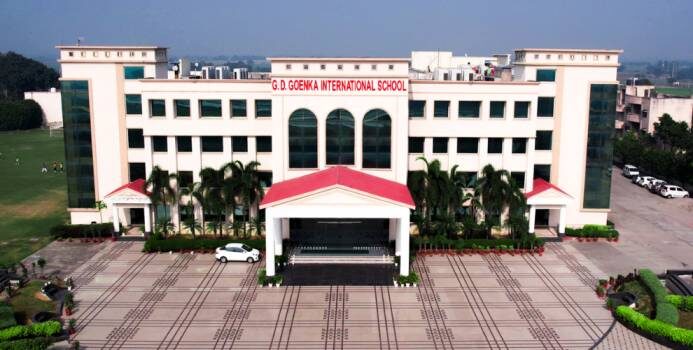Choosing the right boarding school in India for 2026-27 is probably the biggest decision you all make for your child’s future.
I’m not going to sugarcoat it.
This decision will shape who they become.
Their friends. Their habits. Their entire worldview.
And with 20+ top boarding schools in India competing for your attention the choice feels overwhelming.
So let me walk you through exactly what matters.
No fluff. Just facts.
Why Boarding Schools in India Have Evolved Beyond Recognition
Boarding schools in India have existed since the time of the colonisers.
But they are nothing like they used to be.
These institutions now provide a variety of education programs to meet various educational interests and students needs.
The best boarding school in India 2026-27 is no longer about only academics.
They are about creating complete humans.
Leaders. Thinkers. Athletes. Artists.
All rolled into one.
The Real Benefits Nobody Talks About
Heres what actually happens when you send your kid to a top boarding school in India:
- Independence kicks in fast: They learn to make their own bed manage their time, and solve problems without calling mum.
- Responsibility becomes second nature: No more prodding about homework or chores.
- Confidence multiplies: When you are away from home you either sink or swim. Most kids learn to swim fast.
- Social skills skyrocket: Living with 200-500 other kids? Thats a masterclass in human behaviour.
- Academic performance improves: Students tend to do well in their academics and other exercises with the help of study time and faculty expertise.
- Life skills get embedded: They gain crucial life lessons improve their virtues and grow in respect and gratitude.
The best boarding schools in India provide an ideal environment with top-notch infrastructure and facilities for starting a successful life.
Understanding the Top 22 Boarding Schools in India for 2026-27
Let me break down the elite list based on actual data and rankings:
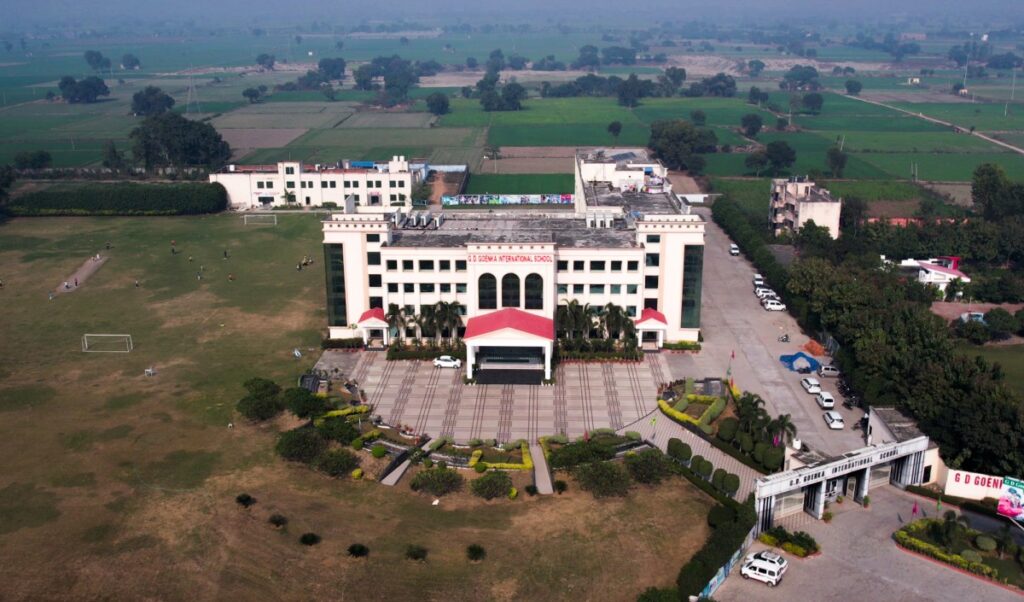
1. GD Goenka International School, Sonepat
Location: Sonepat, Haryana
Curriculum: CBSE
Website: gdgoenkasonepat.com
Nestled just outside the Delhi NCR GD Goenka International School Sonepat represents the vanguard of residential boarding school offering world class facilities international standard boarding and holistic development. From academic achievements to its sports facilities, the school delivers a well-rounded learning experience.
Why GD Goenka Sonepat?
- Lush Green 60 acres campus with modern infrastructure.
- Experienced faculty trained in international teaching standards.
- Emphasize developing character, sports and co-curriculars.
- Individual mentoring and career counseling.
- International student exchange programs.
- Round the clock healthcare and CCTV-monitored security.
Extra Edge: GD Goenka Sonepat also integrates modern technology into its curriculum through AI labs, digital learning tools and interdisciplinary project based learning. With a strong focus on international standards the school stresses more on extracurricular activities span from robotics to debate music, drama and entrepreneurship cells making students future ready in every sense. Parents seeking a progressive modern boarding experience with a strong academic record and all round focus consistently find GD Goenka Sonepat to be an ideal choice.
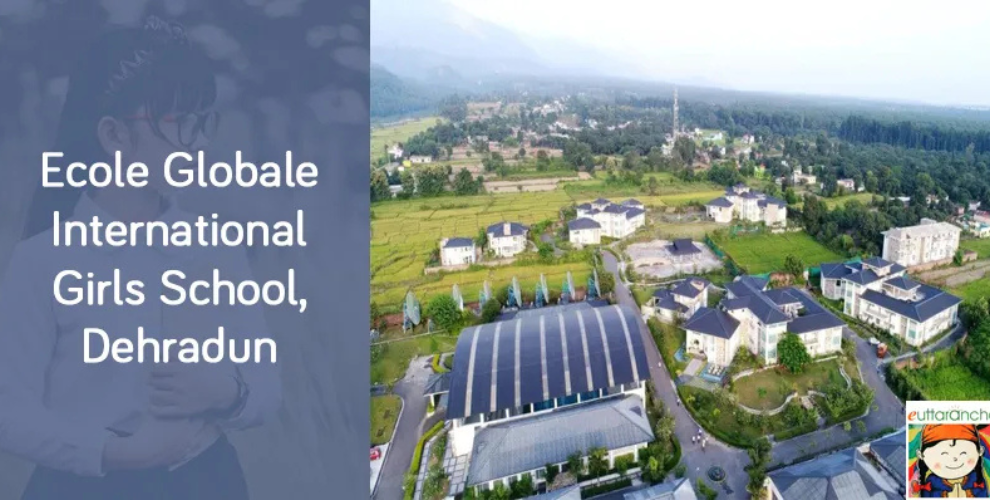
2. Ecole Globale International Girls’ School, Dehradun
- Annual Fees: Approx ₹7,00,000 to ₹10,00,000
- Board: CBSE, CIE
- Grades: 4-12
- Campus: Sahaspur Road, Horawala, Uttarakhand 248197
This girls boarding school in Dehradun has been taking rapid strides toward the zenith of girls’ education.
Modern facilities include up-to-date classrooms, well-equipped laboratories, and excellent sports amenities.
Indoor Games like Swimming, Martial Arts and Outdoor Games like Basketball, Athletics, Squash, Shooting, Horse Riding.
The school’s focus on personal attention from experienced teachers and its assistant community helps students grow and more confident.

3. The Doon School, Dehradun
- Annual Fees: Approx ₹10,25,000
- Board: IB, CISCE, IGCSE
- Classes: 7-12
- Campus: Mall Road Krishna Nagar Dehradun 248001
Established in 1935, this all-boys boarding school for boys aged 12 to 18 is widely regarded as the best boarding school in India.
Spread in 70 acres, the green campus is an oasis in the city of Dehradun with easy road and rail connectivity to Delhi.
The facilities for sports are very good like basketball courts, swimming facilities and the use of these after hours is deemed a valuable addition to physical exercise and team work.
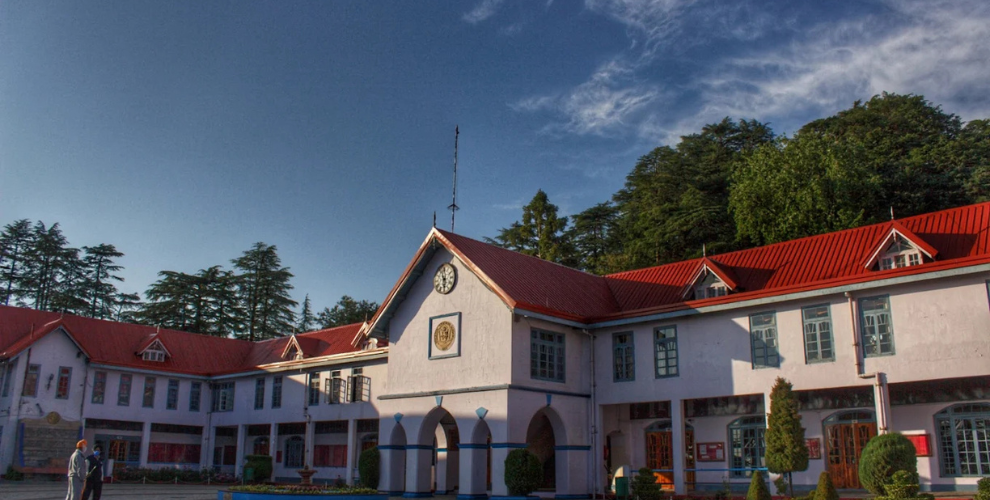
4. Bishop Cotton School, Shimla
- Annual Fees: Approx ₹5,65,000
- Board: ICSE, ISC
- Grades: 3-12
- Campus: Shimla Bypass, Near Khalini, Shimla 171002
Founded on July 28, 1859, by Bishop George Edward Lynch Cotton.
One of the oldest and most beautiful boys’ boarding schools in Asia.
The school uses inspiring programmes related to personal growth and leadership that prepare their students for global challenges by enhancing their bravery.
Modern classrooms, well-equipped science and computer laboratories, and comprehensive library. Boarding life here is organised into houses to foster camaraderie, teamwork, and healthy competition.
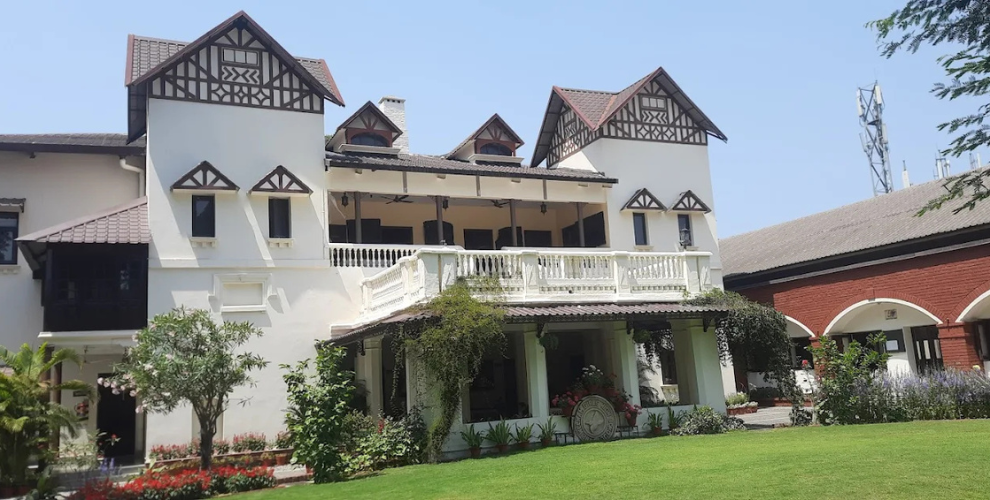
5. Welham Girls School, Dehradun
- Annual Fees: Approx ₹6,75,000
- Board: ICSE, ISC
- Grades: 5-12
- Campus: 19, Municipal Road, Panchpuri Colony, Dalanwala, Dehradun 248001
Established in 1957, this premier institution for girls is known for strong emphasis on academic excellence and holistic student development. Ranked among the top girls boarding schools in India.
The new on-ground teaching facilities and exclusive programs nurture critical thinking, creativity, collaboration, and communication and the average result for Class X comes to 94.5
There is an array of sports facilities and creativity outlets for students physical health.
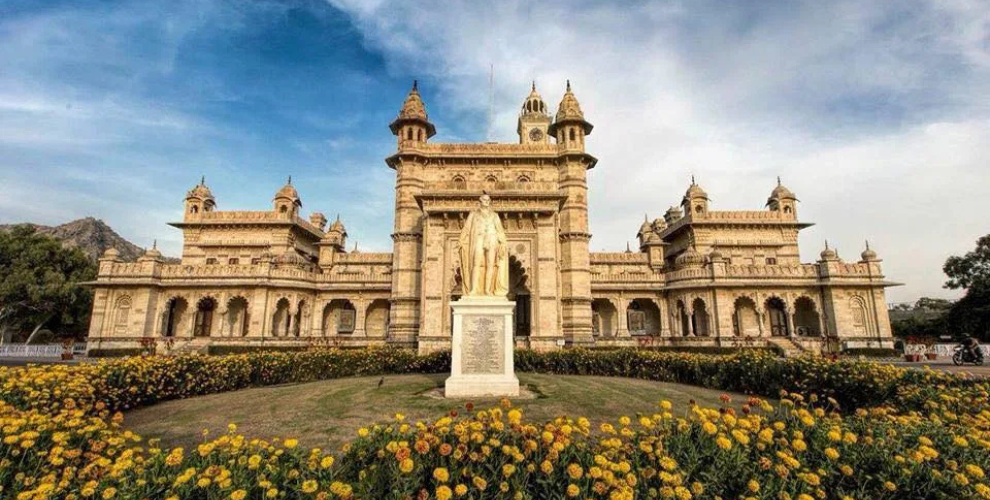
6. Mayo College, Ajmer
- Annual Fees: Approx ₹6,50,000
- Board: CBSE
- Grades: 4-12
- Campus: Shrinagar Road, Ajmer, Rajasthan 305001
Established in 1875, the oldest public boarding school of this country.
Dual curriculum: CBSE and Cambridge International Examination (IGCSE).
The campus spread out across 187 lush green acres and has:
- 40-bed infirmary
- A hall of a library with over 41,000 books
- Excellent sports infrastructure in over 20 different sports

7. Woodstock School, Mussoorie
- Annual Tuition: Approx ₹6,00,000 – ₹14,00,000
- Board: IB
- Grades: KG-12
- Campus: Landour, Mussoorie, Uttarakhand 248179
Established in 1854 and declared the oldest international boarding institution in Asia.
Offers International Baccalaureate Middle Years and Diploma Programmes.
Variety of enrichment activities: outdoor learning, community service, and a strong sports program with badminton, basketball, and cricket.
With the recent renovations, the school has been restored into an architectural mix of the heritage and modern learning spaces.
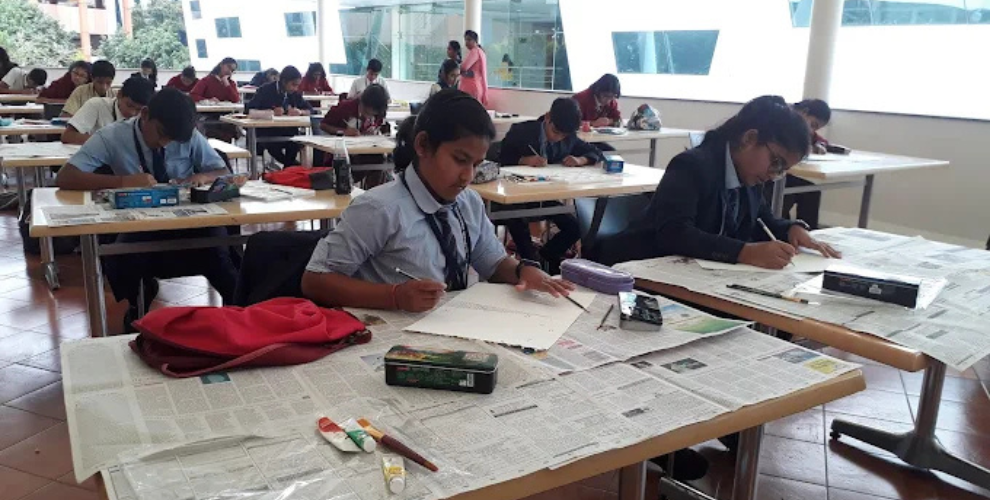
8. Jain International Residential School, Karnataka
- Annual Tuition: Approx ₹2,00,000
- Board: CBSE, IGCSE, IB, CIE, AICE
- Grades: KG-12
- Campus: Jain Global Campus, Jakkasandra Post, Kanakapura, Karnataka 562112
Established in 1999 by Dr. Chenraj Roychand.
Ranked No.1 among residential schools in Bengaluru by The Times Group.
Expansive 350-acre campus provides state-of-the-art facilities.
Sports include: cricket, football, basketball, tennis, squash, golf, equestrian, ten-pin bowling.
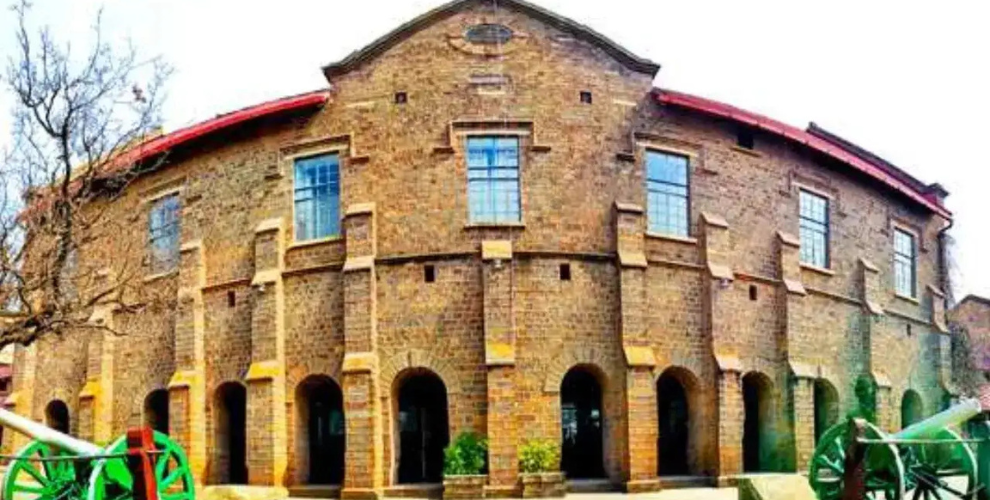
9. The Lawrence School, Sanawar
- Annual Fees Structure: Approx ₹5,50,000 – ₹6,00,000
- Board: CBSE
- Grades: 5-12
- Campus: Sanawar, Kasauli, Solan, Himachal Pradesh 173202
Established in 1847 by Sir Henry Lawrence and his wife Honoria.
One of Asia’s oldest co-educational boarding schools.
Comprehensive curriculum includes Geography, History, Political Science, Psychology, Art, Sculpture, Kathak Dance, Hindustani Vocal Music, Textile Design at Senior Secondary Level.
139-acre campus nestled at altitude of 1,750 metres.
Made history in May 2013: first school globally to send a team of seven students to summit Mount Everest.
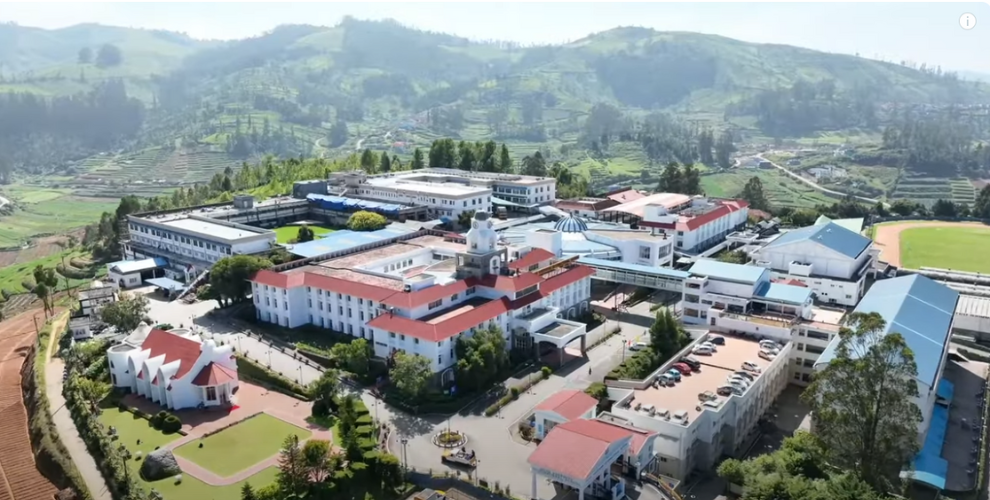
10. Good Shepherd International School, Ooty
- Annual Fees: Approx ₹6,10,000-₹15,00,000
- Board: IGCSE, IB
- Grades: 3-12
- Campus: Good Shepherd Knowledge Village, M. Palada Post, Ooty, Tamil Nadu 643004
Established in 1977 by Dr. P.C. Thomas.
Offers International Baccalaureate (IB) and Cambridge IGCSE programmes.
Ranked India’s No.1 in sports education by Education World India School Rankings 2018-2019.
Expansive campus features, state-of-the-art facilities, including modern classrooms, well-equipped laboratories, extensive sports infrastructure.
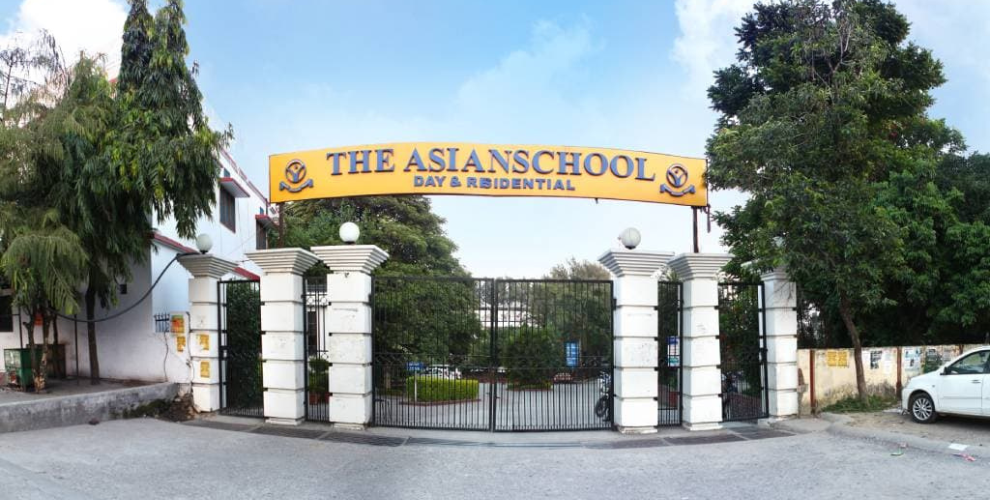
11. The Asian School, Dehradun
- Annual Fees: Approx ₹84,000-₹4,80,000
- Type: Day Boarding
- Board: CBSE, IB
- Grades: Nursery-12
- Campus: Asian Acres, Vasant Vihar, Indira Nagar, Dehradun 248006
Founded in 2000 by visionary educationist Mr. Gaganjyot Juneja.
The 16-acre campus named ‘Asian Acres’ boasts of:
25-metre swimming pool
Multiple sports fields
Dedicated cricket academy
Academic brilliance and pioneering experiential learning are hallmarks of the school.
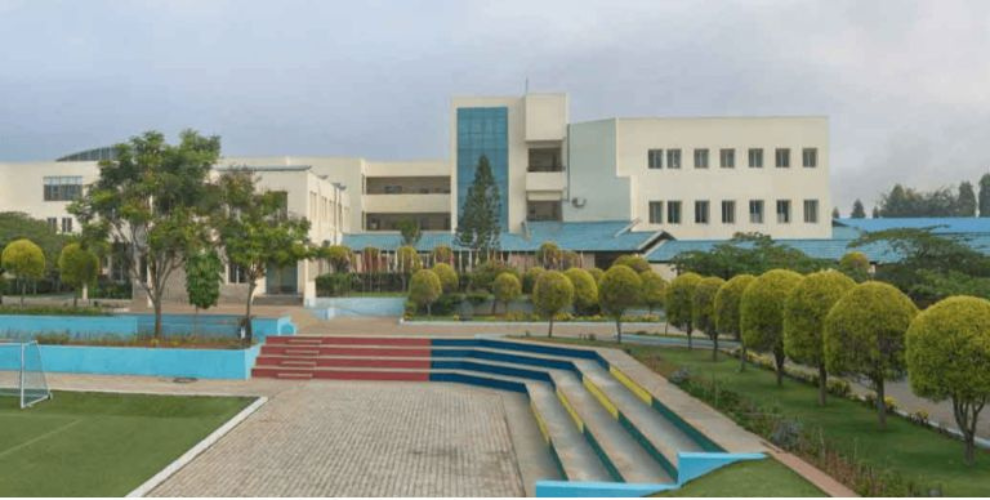
12. Canadian International School, Bangalore
- Annual Fees: Approx ₹7,00,000 yearly
- Type: Day Boarding
- Board: IB, IGCSE
- Grades: KG-12
- Campus: 4 & 20, Manchenahalli, Yelahanka, Bengaluru 560064
Established in 1996.
First school in India to operate entirely on solar power.
First to be recognised as an Apple Distinguished School.
15-acre campus with 25-metre swimming pool, multiple sports courts, separate boarding facilities for boys and girls.
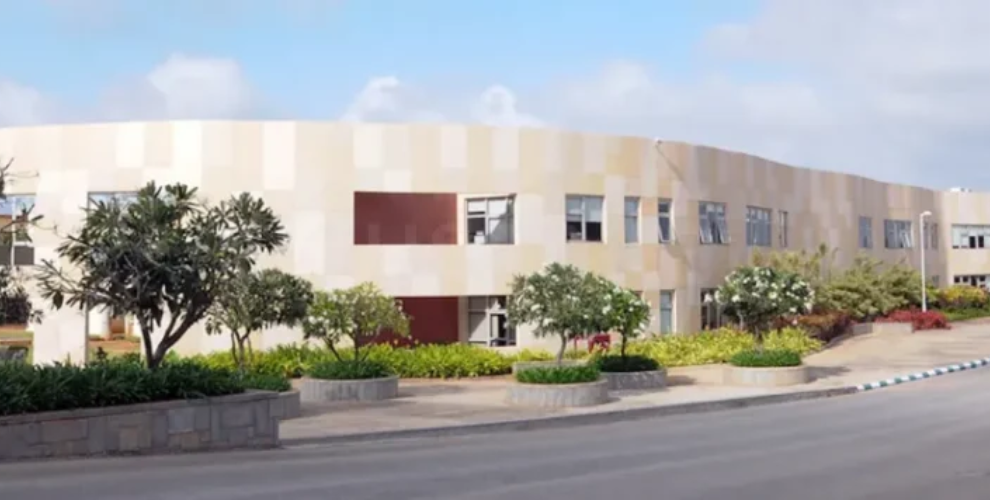
13. Stonehill International School, Bangalore
- Annual Fees: Approx ₹9,00,000 yearly
- Type: Day Boarding
- Board: IB
- Grades: KG-12
- Campus: No.259/333/334/335, Tarahunise Post, Jala Hobli, Bengaluru 562157
Established in 2008.
Offers full IB continuum: Primary Years, Middle Years, and Diploma Programmes.
Accredited by Council of International Schools (CIS) and New England Association of Schools and Colleges (NEASC).
34-acre campus features dedicated Arts Centre with black box theatre, music rooms, art studios.

14. The International School Bangalore
- Annual Fees: Approx ₹1,70,000 to ₹3,00,000 yearly
- Type: Day Boarding
- Board: IGCSE, IB
- Grades: Kg-12
- Campus: NAFL Valley Whitefield – Sarjapur Road, near Dommasandra, Bengaluru 562125
Established in 2000 by Dr. K. P. Gopalkrishna.
Students secured placements in MIT, Harvard, Oxford, Cambridge.
140-acre campus with state-of-the-art facilities.
Offers International Award for Young People (IAYP) for personal growth and community service.
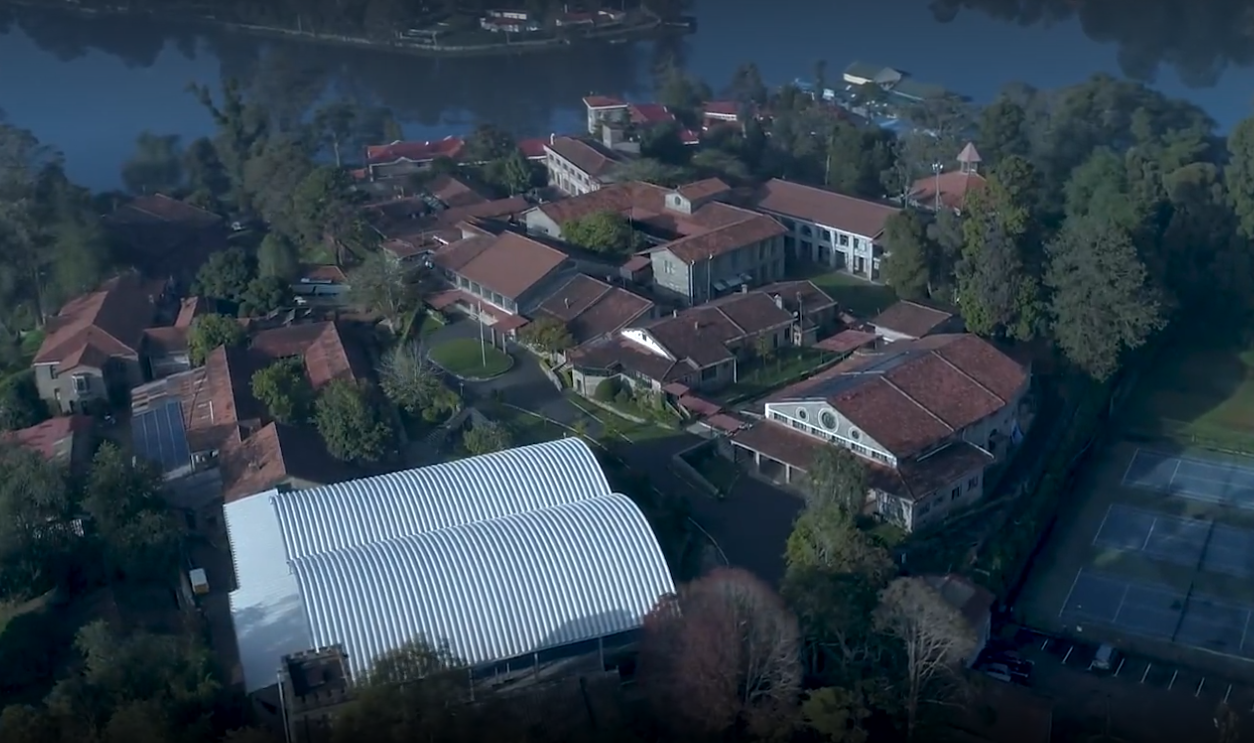
15. Kodaikanal International School
- Annual Fees: ₹6,00,000 – ₹7,00,000
- Board: IB
- Grades: KG-12
- Campus: Seven Roads Junction, Kodaikanal, Tamil Nadu 624101
Established in 1901 by Margaret Eddy.
India’s first IB World School.
Offers full IB continuum plus its own KIS Diploma.
43-acre campus with dedicated outdoor education centre at Poondi.
Students consistently achieve higher results than world mean scores in IB and SAT exams.
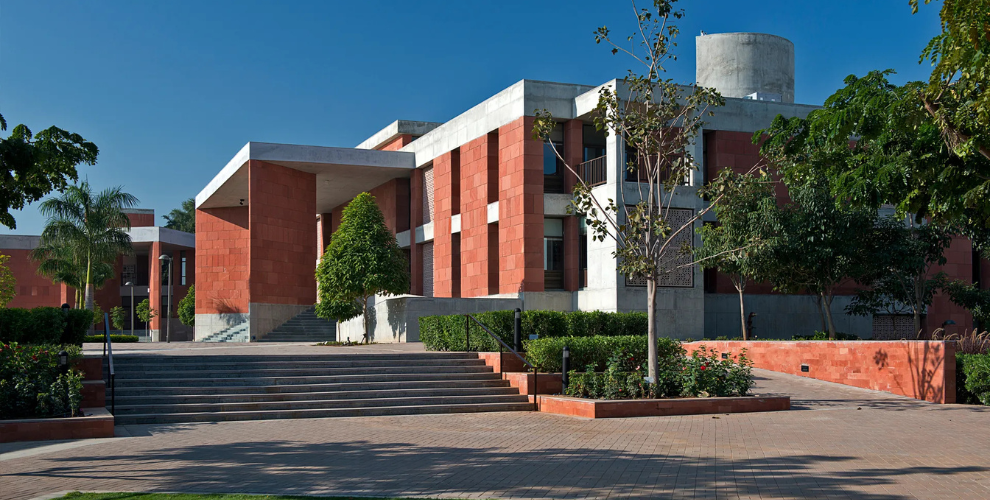
16. The Aga Khan Academy, Hyderabad
- Annual Fees: Approx ₹6,00,000
- Board: IB
- Grades: N/A
- Campus: Survey No: 1/1, Hardware Park, Maheshwaram Mandal, Hyderabad 500005
Established in 2011.
Part of international network of schools aimed at exceptional education.
100-acre campus near Rajiv Gandhi International Airport.
Students engage in Model United Nations, organic farming, football, squash, swimming.

17. Sahyadri School, Pune
- Annual Fees: Approx ₹1,90,000 per year
- Board: ICSE, ISC
- Grades: 4-12
- Campus: Tiwai Hill, Tal: Rajgurunagar (Khed), Dist: Pune 410513
Established in 1995 by Krishnamurti Foundation India institution.
Campus features modern classrooms, well-equipped laboratories, extensive sports facilities amidst lush greenery and diverse flora and fauna.
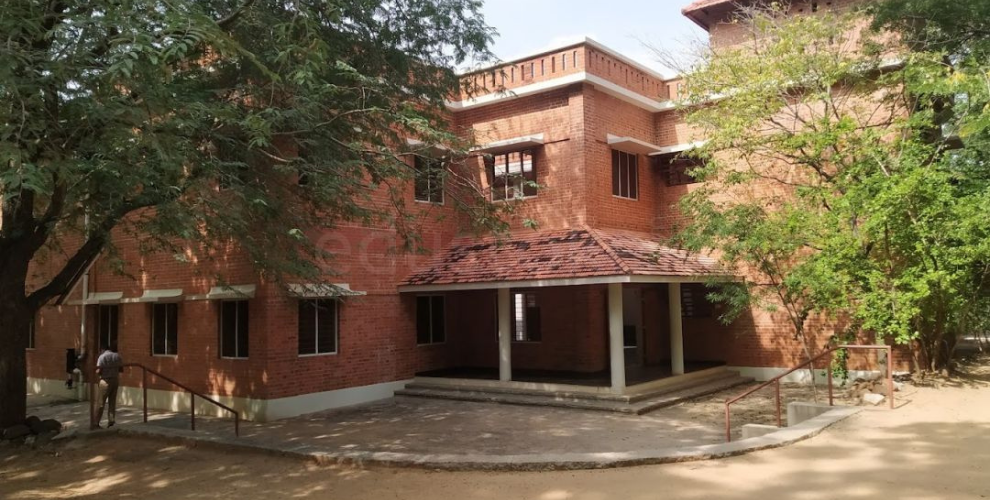
18. Rishi Valley School, Chittoor
- Annual Fees: Approx ₹4,00,000
- Board: ICSE, ISC
- Grades: 4-12
- Campus: Rishi Valley, Chittoor District, Madanapalle, Andhra Pradesh 517352
Established in 1926 by philosopher Jiddu Krishnamurti.
375-acre campus with well-stocked libraries, specialised subject rooms, audio-visual amenities.
Pioneered multi-grade, multi-level (MGML) teaching methodology through Rishi Valley Institute for Educational Resources (RIVER).
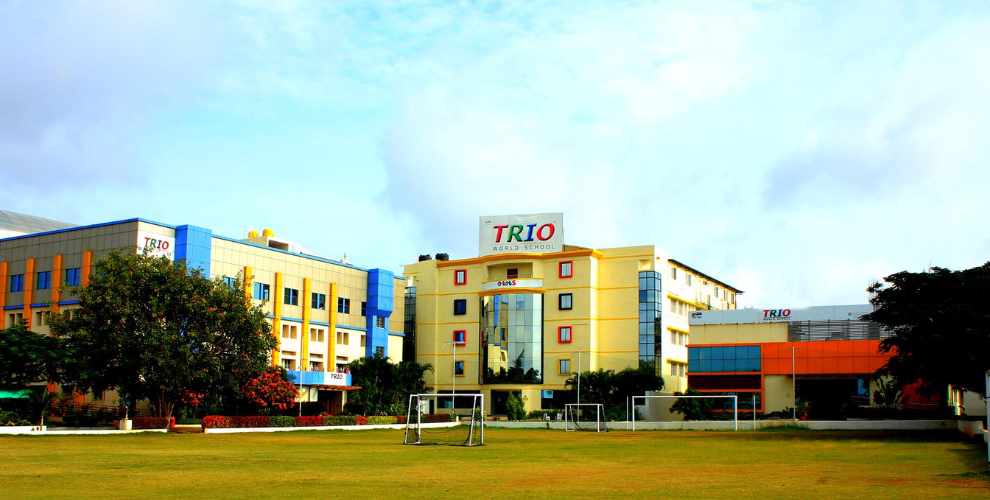
19. Trio World Academy, Bengaluru
- Annual Fees: Approx ₹2 lakh per annum (including books and food)
- Type: Day Boarding
- Board: IB, IGCSE, ICSE
- Grades: Nursery-12
- Campus: 3/5, Kodigehalli Main Road, Defence Layout, Sahakar Nagar, Bengaluru 560092
Established in 2007.
Recognised as “Institution of Happiness” by QS I-GAUGE.
IB Diploma Programme grade points consistently surpass world average.
Excellent campus with air-conditioned classrooms, modern technology, well-stocked libraries.

20. Hebron School, Bairatisal
- Annual Fees: ₹5,00,000 – ₹6,00,000
- Board: N/A
- Grades: KG-12
- Campus: NH317, Bairatisal, West Bengal 734013
Established in 1899.
Christian co-educational boarding institution.
Offers international curriculum based on English National Curriculum, culminating in IGCSE examinations and A-Level qualifications.
Campus of 22 acres, modern classrooms, laboratories equipped with modern appliances, and extensive sports facilities amidst calming views of the Nilgiri Hills.
Celebrated 125 years in 2024.

21. Sreenidhi International School, Hyderabad
- Annual Fees: Approx ₹2,80,000
- Board: IB
- Grades: Nursery-12
- Campus: Near TS Police Academy, Near Appa Junction Aziz Nagar Moinabad, Hyderabad 500075
Established in 1995.
60-acre campus with cricket pitches, football fields, swimming pools, courts for basketball, badminton, squash, tennis.
Consistent rise in acceptance rate of IB Diploma Programme students by world-class universities.
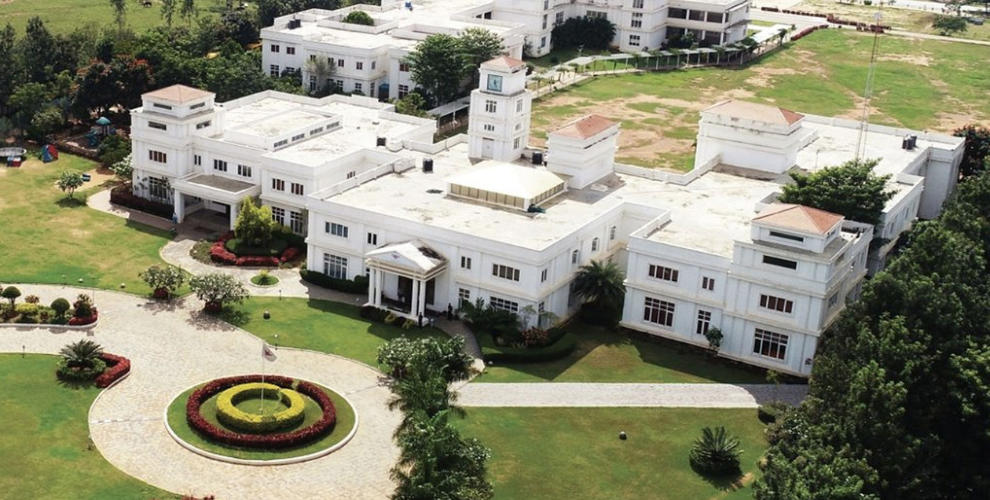
22. Candor International School, Bengaluru
- Annual Fees: Approx ₹3,90,000 yearly
- Board: IB, IGCSE
- Grades: Nursery-12
- Campus: Koppa-harapanhalli Road, Hullahalli, Off Bannerghatta Main Road, near Electronic City, Bengaluru 560105
Established in 2010 by Dr. Suresh Reddy.
Achieved 100% academic success across all boards.
An area of 25 acres comprising international standards swimming pool, basketball courts, and tennis courts, artificial turf football field, organic vegetable farm, and dairy farm.
Curriculum Breakdown: Which Board for Which Goal?
The Central Board of Secondary Education (CBSE)
Schools providing CBSE curriculum include:
- Mayo College, Ajmer.
- The Lawrence School, Sanawar.
- The Asian School, Dehradun.
- Ecole Globale International Girls’ School.
For whom: students opting for JEE, NEET or any other Indian competitive exams.
Why it works: The curriculum aligns perfectly with entrance exam patterns. Over 27,000 schools use it nationwide.
ICSE/ISC (Council for the Indian School Certificate Examinations)
Name of schools giving the ICSE/ISC:
- Bishop Cotton School, Shimla
- Welham Girls School, Dehradun
- Rishi Valley School
- Sahyadri School, Pune
Best for: With English being a strong point for them, students want to pursue Humanities or want to go abroad.
Why it works: Much wider in scope than CBSE. Better training for the English language
IB (International Baccalaureate)
Schools offering IB:
- The Doon School (also CISCE, IGCSE)
- Woodstock School
- The Asian School (also CBSE)
- Jain International Residential School (also CBSE, IGCSE, CIE, AICE)
- Good Shepherd International School (also IGCSE)
- Stonehill International School
- The International School Bangalore (also IGCSE)
- Kodaikanal International School
- The Aga Khan Academy
- Trio World Academy (also IGCSE, ICSE)
- Sreenidhi International School
- Candor International School (also IGCSE)
Best for: Students planning to study at universities abroad.
Why it works: Globally recognised curriculum. Encourages critical thinking and research. Its gates are open to obtaining admittance to the world-leading institutions such as MIT, Harvard, Oxford, or Cambridge..
IGCSE/Cambridge (CIE/CAIE)
IGCSE/Cambridge Schools:
- Ecole Globale (CBSE, CIE)
- The Doon School (IB, CISCE, IGCSE)
- Mayo College (CBSE, IGCSE)
- Jain International Residential School (various boards)
- Good Shepherd International School (IB, IGCSE)
- Canadian International School
- The International School Bangalore
Best for: Globally mobile families or students eyeing UK universities.
Why it works: British-based education system. Students select 5-14 subjects based on interests. Less theoretical, more practical.

Location Analysis: Where Your Child Will Actually Thrive
Geography determines everything from health to happiness.
Dehradun: India’s School Capital
Why it dominates:
- Moderate climate (not too hot, not freezing)
- Close to Delhi (easy access)
- Clean air compared to metros
- Established education ecosystem
Top boarding schools in Dehradun:
- The Doon School
- Welham Girls School
- Ecole Globale
- The Asian School
Hill Stations: Mussoorie, Shimla, Nainital, Ooty
Advantages:
- Clean one, pollution-free air
- Scenic beauty that rejuvenates mental wellness
- Cooler climate all year round
- Natural outdoor setup for learning
Challenges:
- Accessibility factors during monsoons
- Limited medical facilities
- Higher operational costs
- Connectivity issues in extreme weather
Top hill station boarding schools:
- Woodstock School, Mussoorie
- Bishop Cotton School, Shimla
- Good Shepherd International School, Ooty
- Kodaikanal International School, Tamil Nadu
Metro Cities: Bangalore, Hyderabad, Delhi NCR
Advantages:
- Year-round accessibility
- Better medical infrastructure
- International airports nearby
- Tech-forward education
- Less expenses than hill stations
Top metro boarding schools:
- GD Goenka International school,Delhi NCR
- Jain International Residential School, Bangalore
- Canadian International School, Bangalore
- Stonehill International School, Bangalore
- The International School Bangalore
- The Aga Khan Academy, Hyderabad
- Sreenidhi International School, Hyderabad
Heritage Cities: Ajmer, Gwalior
Advantages:
- Rich cultural heritage
- Traditional values imbibed in education
- Royal legacy and alumni networking
- Cheaper than metros
Top heritage boarding schools:
- Mayo College, Ajmer
- The Scindia School, Gwalior
Fee Structure: What You’re Actually Paying
Let me break down the actual costs across different budget categories:
Budget-Friendly (Below ₹3 Lakhs)
- Sahyadri School, Pune
- Jain International Residential School
- Trio World Academy
- Sreenidhi International School
Mid-Range (₹3-7 Lakhs)
- Bishop Cotton School
- The Aga Khan Academy
- Mayo College
- Welham Girls School
- Good Shepherd International School
- Canadian International School
Premium (₹7-12 Lakhs)
- Ecole Globale
- Stonehill International School
- The Doon School
Luxury (₹12+ Lakhs)
- The Lawrence School Sanawar
- Rishi Valley School
- Woodstock School
Hidden costs you must add:
- Admission fees (one-time): ₹50,000-₹1,50,000
- Books and uniforms: ₹20,000-₹50,000 annually
- Travel: depends on location
- Extra coaching: variable
- Medical expenses: ₹10,000-₹30,000
- Activities and trips: ₹10,000-₹50,000 minimum
Budget 25-30% above quoted fees.

Infrastructure That Actually Matters
Fancy brochures show swimming pools and theatres but this is what your kid will need daily:
Academic Infrastructure
Classrooms:
- Smart boards and projectors
- Air-conditioned spaces
- Natural lighting
- Comfortable seats
Laboratories:
- Separate labs for Physics, Chemistry, and Biology
- Computer lab with the latest software
- Robotics and coding lab
Libraries:
- A good collection of over 40,000 books (such as Mayo College)
- Access to digitized resources
- Quiet study area
- Comfortable reading couches
Sports Facilities
Indoor:
- Swimming pool (minimum 25 meters)
- Table tennis, chess, badminton courts
- Dance studio
- Music room
- Gym
Outdoor:
- Cricket pitches
- Football grounds
- Basketball courts
- Tennis courts
- Athletics tracks
- Horse-riding (Ecole Globale, Mayo College)
- Shooting ranges (Ecole Globale)
- Squash courts
Residential Facilities
Dormitory:
- Room occupancy (2-4 students per room being ideal)
- Ventilation and natural light
- Attached or nearby washroom
- Availability of hot water
- Study desk
- Storage
- Common rooms for socialising
Medical support:
- Medical staff must be present at all hours of the day and night
- Tie-ups with nearby hospitals
- Counsellors for mental health
Dining Facilities:
- Variety in menu (not the same dal-roti daily)
- Dietary accommodations
- Hygiene standards
- Nutritionist planning for meals
The Admission Process: Month-by-Month Timeline
Most boarding schools share the same admission process.
July-September: Research Phase
Action items:
- Make a shortlist based on location, curriculum, and budget
- Go to websites of schools
- Download prospectuses
- Register for parent forums
September-November: Application Phase
Action items:
- Open houses should be attended.
- Register online (registration is open for most schools)
- Pay registration fee (₹5,000-₹35,000)
- Collect necessary documentation
Documents needed:
- Birth certificate
- Previous academic records (mark sheets)
- Transfer certificate
- Medical records and vaccination certificates
- Passport size photographs
- Parent/guardian ID proofs (Aadhar, passport)
- Address proof
- Extracurricular certificates
November-January: Testing Phase
What happens:
- Common Aptitude Assessment (CAA) for multiple schools
- School entrance exams
- Subject tests: English, Maths, Science, Hindi
- Reasoning and Aptitude Tests
Examples:
- The Doon School: Written exam in November
- Mayo College: CAA in September
- The Scindia School: CAA and SAA in November-February
- The Lawrence School: Tests in November, February, or April
January-February: Interview Phase
What to expect:
- Interacting with students
- Interviewing parents
- Campus tours (if not already done)
- Fit and assessment
What schools evaluate:
- Communication skills
- Confidence level
- Interest areas
- Family background
- Motivation for boarding school
- Cultural fit
February-March: Offer Phase
Action items:
- Release of admission offers
- Fee payment deadlines (usually 2-4 weeks)
- Confirming seat by paying an advance
- Completing remaining documents
Action items:
- Finalisation of arrangements
- Purchasing uniforms and supplies
- Emotional preparation of the child
- Setting of communication protocols

Factors to Consider When Choosing the Best Boarding School
Let me simplify the decision matrix:
1. Location
Why it matters: Location impacts a school’s quality of education, overall experience, and accessibility.
Consider:
- Climate and health impacts
- Distance from home
- Accessibility during emergencies
- Pollution levels
- Natural environment
Parents opt for schools nearer to home, while a few prefer a serene setting in hill stations.
Location shall always influence the options for extracurricular activities.
2. Facilities
Why it matters: Facilities affect the quality of education and subsequent living.
Evaluate accordingly:
Evaluate:
- Classrooms facilities and setup, and technology integrated
- Libraries (size, digital access)
- Laboratories (Physics, Chemistry, Biology, Computer)
- Sports (types and quality)
- Accommodation
- Dining facilities
- Medical facilities
State-of-the-art facilities contribute toward an environment conducive for learning.
3. Academic Performance
Why does it matter? When it comes to choosing the best boarding school in India, this is truly a vital consideration.
Research:
- An institution’s stature in the academic world
- The training and experience levels of the teaching faculty
- The curriculum structure
- Academic resources available
- Performance in board examinations
- University placements
Examples:
- Welham Girls School: Class X average 94.5%
- TISB Students: Getting into MIT, Harvard, Oxford, and Cambridge
- Kodaikanal International School: Sustained scores consistently above world mean in the IB
4. Extracurricular Activities
Why it matters: For the all-round development of children, it is vital to develop social skills, leadership qualities, and self-confidence.
Look for:
- Sports
- Arts (music, dance, drama, pottery)
- Clubs and societies
- Community service
- Leadership activities
These activities also nurture teamwork and responsibility.
5. Discipline and Safety Measures
Why it matters: Parents must look into the matters of safe and secure environment.
Research:
- Anti-bullying policy
- Anti-harassment policy
- Anti-substance abuse policy
- Security measures (24-hour camera surveillance)
- Emergency procedures
- Medical facility
Verify:
- Disciplinary action
- Implementation of rules and regulations
- Supervision of students
6. Reputation
Why it matters: The reputation of any institution is an indicator of the quality of education, the results of the students and the value system upheld by the institute.
Assess some elements in school-ranking systems:
- History and Legacy of the School
- Strength of Alumni Network
- Bodies Recognized by Accreditation Boards
- Testimonials from Current Students and/or Parents
Get honest insights by engaging with current and past students, parents, and staff.

Special Considerations for Girls Boarding Schools in India
Single-gender schooling has different benefits to offer.
Top Girls Boarding Schools
Ecole Globale International Girls’ School, Dehradun:
- Curriculum focus on empowerment
- Emphasis on leadership and professionalism
- State-of-the-art facilities: swimming, martial arts, horse riding
Welham Girls’ School, Dehradun:
- Emphasis on academic excellence
- 94.5% average in Class X
- Notable alumni including Kareena Kapoor, Diana Penty
Heritage Girls School, Udaipur:
- Holistic educational approach
- CBSE and IGCSE boards
- Values and traditions, along with present-day teaching
- Excellent hostel facilities
Mussoorie International School:
- All-girls residential school
- ICSE, ISC, IGCSE curricula
- Global exposure opportunities
- Diverse extracurricular activation
Benefits of Girls Boarding Schools
- Safe spaces for leadership: Girls lead without competing with boys. More confident participation in class. Higher likelihood of taking STEM subjects.
- Values and character: Focus on women empowerment. Building confidence and independence. Developing strong female role models.
- Reduced social pressure: Freedom from certain gender stereotypes. Focus on academics without romantic distractions. Stronger female friendships.
Boys Boarding Schools in India: The Traditional Excellence
Top Boys Boarding Schools
The Doon School, Dehradun:
- The largest student-run MUN in India
- 70-acre campus with contemporary buildings
- Emphasis on leadership development and service
- Distinguished alumni: Rajiv Gandhi, Amitabh Bachchan (family members)
Bishop Cotton School, Shimla:
- Founded in 1859
- Character building and focus on leadership
- House system to encourage camaraderie
- Stunning hill station campus
Mayo College, Ajmer:
- A royal legacy since 1875
- 187-acre campus
- Over 41,000 books in the library
- More than 20 sports available
The Scindia School, Gwalior:
- Founded in 1897
- Atop Gwalior Fort
- 100-acre campus
- In the service of leadership and tradition
Benefits of Boys Boarding Schools
- Brotherhood and bonding: Strong male friendships lasting for a lifetime. Understanding masculine identity in a safe environment. Mentoring of youngsters by older students.
- Discipline and structure: Military-style discipline (especially at Scindia, Lawrence). Character building through routine and a lot of emphasis on physical fitness.
- Tradition and legacy: Many over 100 years old. Strengthened alumni networks. Traditional values were embedded in them.

Co-Educational Boarding Schools: Preparing for Real World
Top Co-Ed Boarding Schools
G.D. Goenka International School, Sonepat
- Established in 2012
- Type: Co-educational Day Cum Boarding School
- Affiliation: Central Board of Secondary Education
- Campus Size: 16 acres
- Location: Kundli, Sonepat, Haryana
The Lawrence School, Sanawar:
- Established 1847
- One of the oldest co-ed schools in Asia
- 139 acres at a height of 1,750 meters
- First school to climb Everest (2013)
Woodstock School, Mussoorie:
- Established 1854
- Asia’s oldest international boarding school
- An IB curriculum from 30+ nationalities
Rishi Valley School, Chittoor:
- Established 1926
- Krishnamurti philosophy
- 375-acre eco-friendly campus
- No exams until Grade VIII
The Asian School, Dehradun:
- Established 2000
- Day & full boarding options
- CBSE and IB boards
- Technology-integrated learning
Benefits of Co-Ed Boarding
- Real-world concerns: Students learn how to work with everybody. Natural social dynamics provide a balanced view of gender issues.
- Academic balancing: Healthy competition between the two genders in diverse classroom discussions on a subject. Different perspectives and teaching methods.
- Social wing development: Learning to socially interact with appropriate behaviors and respect for the opposite gender. Forming professional relations from an emerging point.
International Boarding Schools in India: Global Standards
What Makes a School “International”?
- Curriculum: IB, IGCSE, Cambridge, American curriculum (not just Indian boards).
- Student diversity: Students from many countries. Teachers from various backgrounds.
- The global angle: Exchanges abroad. Multicultural celebrations. Language learning opportunity.
Top International Boarding Schools
Woodstock School, Mussoorie:
- 30+ Nationalities
- IB Curriculum
- Experiential Basis
- Heritage with Modern Facilities
- Community Connect Programmes
Kodaikanal International School:
- First IB World School in India (1901)
- American and IB Curriculum
- Multicultural Student Body
- Above World Mean IB Scores Since Inception
- 43-acre Campus with Outdoor Education Center
Canadian International School, Bangalore:
- First school in India to run on Solar Power
- Apple Distinguished School
- IB and IGCSE Programmes
- 15-acre Campus, located near international airport
The Aga Khan Academy, Hyderabad:
- Aga Khan Global Network Member
- 100-acre campus
- Professional Development Centre for Teachers
- IB curriculum at all levels
- Students from diverse backgrounds
Jain International Residential School:
- CBSE, IGCSE, IB, CIE, AICE options
- Students from various countries
- Ranked No.1 Residential School of Bengaluru
Benefits of International Boarding Schools
- Global curriculum: Recognised across all universities with an emphasis on thinking rather than relying on learning. Powerful research and inquiry base.
- Cultural Diversity: Learning of tolerance and empathy happens naturally. Exposure to different perspectives. Language learning opportunity. Building a Global Citizenship mindset.
- Career incentives: Easy admission to other international Universities. Ready for Global Careers. Strong international Alumni Networks.
- Why do foreign students come to India: Rich in cultural heritage, teaching methods par excellence, cheaper than Western schools. Diverse emotions and background of culture. Quality education with good infrastructure.
Day Boarding vs Full Boarding: Which Model Works?
Day Boarding Schools
What it means: Students stay from morning till evening (typically 7am-7pm) or till weekend. Extended hours beyond regular day school. Structured academic and extracurricular time. Return home to sleep.
Best day boarding schools:
- GD Goenka International School, Sonepat
- The Asian School, Dehradun
- Canadian International School, Bangalore
- Stonehill International School, Bangalore
- The International School Bangalore
- Trio World Academy, Bangalore
Advantages:
- Evenings are spent with family
- Lower costs (no boarding fees)
- Structured supervision during daytime
- Access to boarding level facilities
- Parental involvement retained
Best for:
- Younger children (below 10)
- Nearby families
- Those who can’t stand separation
- Students in need of family support
- Trial before full boarding
- working preofessionals
Full Boarding Schools
What it means: Students live on campus 24/7. Go home during holidays and occasional weekends. Complete residential experience.
Advantages:
- Training for full independence
- Round-the-clock academic support
- Deeper bonding
- Time management skills
- Decreased daily commute stress
Best for:
- Children above 10-11 years
- Armed forces families
- Working parents with travelling demands
- Students in need of discipline structure
- International students
Making the Choice
Ask yourself:
About your child:
- Age and maturity level
- Independence ability
- Social adaptability
- Home sickness tendency
- Academic support needs
About your family:
- Work schedules
- Distance from school
- Sibling situations
- Financial considerations
- Emotional preparedness
NRI and International Student Admissions
Why NRIs Choose Indian Boarding Schools
- Cultural Connection: Children stay grounded in Indian values. Inculcating an understanding of heritage and traditions. Family language retention.
- Quality Education: At lower costs than those of international standard. Globally recognised syllabi (IB, IGCSE). Better teacher to student ratio as compared to the western counterparts.
- Cost advantage: ₹10-18 lakhs vs £40,000-60,000 in UK. ₹10-18 lakhs vs $50,000-70,000 in USA. Quality comparable, cost 50-70% lower.
- Network building: Connection with Indian business ecosystem. Alumni networks spanning generations. Cultural and professional connections.
Admission Process for International Students
Documentation requirements:
- Passport Copy
- Visa documents
- Birth certificate
- Previous academic records (all apostilled copies)
- Medical records
- Vaccination certificates
- Guardian nomination in India
- Transfer certificate
Testing arrangements:
- Online entrance exams.
- Interviews are held over video.
- Test centres in major cities around the world.
- Time-zone flexibility.
Fee structure differences: Some charge higher fees from international students whereas some do not:
Best schools for international students:
- GD Goenka International School (students from various caultures and backgrounds)
- Woodstock School (30 plus nationalities being represented)
- Kodaikanal International School (Multicultural)
- Canadian International School
- The Aga Khan Academy
- Jain International Residential School
Practical Considerations
Guardian Requirement: Most schools insist on having local guardians in India. A guardian attends parent meetings. Emergency contact.
Communication:
- International calling facilities
- Regular video call schedules
- Email updates to parents
- WhatsApp/social media (monitored)
Holiday arrangements:
- Term breaks: October, December, March/April, Summer and winter vacations.
- In short breaks, some students stay back.
- Host family arrangements can be set up.
- The school needs to organize activities for those who stay.
Safety, Security and Well-Being in Boarding Schools: Non-Negotiables
Physical Safety Measures
24/7 Security:
- Trained security guards
- CCTV installed through the campus
- Controlled entry and exit points
- Visitor management systems,
- Biometric access to some schools
Fire Safety:
- Fire extinguishers available in all buildings
- Smoke detectors
- Regular fire drills
- Evacuation procedures
- Training for fire evacuation to the students
Medical Infrastructure:
- Medical centres on campus
- Nurses on duty 24×7
- Visiting doctors
- Has tie-ups with a couple of nearby hospitals
- Ambulance on standby
- Medical insurance arrangements
Emergency Protocols:
- Clear communication mechanisms
- Parent notification procedures
- Emergency contact procedures
- Natural disaster preparedness
- Crisis management teams
Mental Health and Pastoral Care
Counselling services:
- Professional counsellors are on the staff.
- Regular mental health check-ins.
- Confidential support.
Anti-bullying policy:
- Zero tolerance policy
- Clear reporting channels
- Rapid response measures
- Peer support
Homesickness management:
- Gradual transition programmes
- Buddy system for new students
- Regular communication with parents
- Counsellor support
House system benefits:
Different communities within a bigger school
- House parents for support
- Peer mentoring
- Sense of belonging
- Nutrition and health
Meal quality:
- Menu planning by nutritionists
- Prepare fresh and hygienic food
- Varied menu each day
- Fully balanced nutrition
Dietary accommodations:
- Vegetarian or non-vegetarian
- Special religious diets: Jain, Halal etc.
- Allergy management
- Special diet for medical reasons
Why it matters: Personal attention given to each student. Accommodates individual learning pace. Provides better avenues for mentorship. Builds stronger teacher-student relationships.
Academic Support Services
For struggling students:
- Remedial classes
- Individual tutoring
- Study skills workshops
- Learning disability support
- Peer tutoring programmes
For advanced students:
- Enrichment programmes
- Advanced placement
- Research opportunities
- Competition preparation
- Olympiad coaching
University preparation:
- Career counselling (9th-10th)
- Applications to university
- Essay writing
- Interview preparation
- Scholarship applications
- Examples:
World-class facilities:
Physical Activities:
- Horse riding
- Shooting
- Swimming
- Squash
- Martial arts
Common sports across schools:
- Cricket
- Football
- Basketball
- Badminton
- Tennis
- Swimming
- Athletics
- Volleyball
- Performing arts
Music programmes:
- Hindustani classical
- Western music
- Choir and bands
- Music production
Dance:
- Kathak
- Contemporary dance
- Folk dances
- Ballet
Drama and Theatre:
- Regular productions
- Inter-school competitions
- Public speaking
- Debate clubs
Visual Arts:
- Painting
- Sculpture
- Pottery
- Textile design
- Photography
- Leadership Development
Student government:
- School prefects
- House captains
- Student councils
- Class representatives
Clubs and societies:
- Debate clubs
- MUN
- Environmental clubs
- Entrepreneurship clubs
- Astronomy clubs
- Journalism clubs

Technology Integration in Modern Boarding Schools
Digital Learning Infrastructure
Smart classrooms:
- Interactive whiteboards
- Projectors and screens
- Audio-visual systems
- Digital learning tools
- Latest hardware and software
- High-speed internet
- Programming tools
- Design software
Learning Management Systems:
- Online assignments
- Grade tracking
- Parent portals
- Digital libraries
Coding and Robotics
Programmes offered:
- Coding class
- Robotics competitions
- App development
- AI and machine learning intro
Controlled Technology Use
Mobile phone policies: Most schools restrict phones:
- Collected during week
- Allowed on weekends
- Supervised usage
- Controlled social media access
Why it matters: Reduces distractions. Prevents cyberbullying. Encourages real conversations. Better sleep patterns.
Making Your Final Decision: The Framework
Create Your Weighted Decision Matrix
Academic Quality (30%):
- Aligning curriculum with goals
- Board examination results
- University placements
- Teaching methodology
- Faculty qualifications
Safety and Well-being (25%):
- Security arrangements
- Medical facilities
- Mental wellness assistance
- Anti-bullying policies
- Pastoral care quality
Infrastructure (15%):
- Campus dimensions and upkeep
- Sports facilities
- Academic facilities
- Housing
- Dining
Location (10%):
- Climate compatibility
- Accessibility
- Environmental considerations
- Distance from home
Extracurricular (10%):
- Sports proficiencies
- Artistic proficiencies
- Leadership
- Service
Value for Money (10%):
- Fee structure
- Hidden fees
- Scholarship availability
- Cost-Efficacy of Education
Campus Visit Checklist
What to observe:
- The satisfaction level of students
- Cleanliness of the campus
- Quality of interaction between teachers and students
- Condition of the dormitories
- Food quality (eat there!)
- How often the library is used
- Level of how often sport facilities are used
Questions to ask students (without staff):
- Are they happy here?
- How’s the food for real?
- What do they do in free time?
- How do the teachers deal with trouble?
- Would they recommend this school?
Questions to ask staff:
- Teacher retention
- Average class size
- Help for students needing extra support
- The university placement process
- Frequency in contact with parents
- Emergency protocols
Red flags to watch:
- Evasive answers
- Defensive reactions
- Hidden areas
- Areas with unhappy students
- High turnover rates by teachers
- Pressure tactics
Involve Your Child in the Decision
Their input matters: They’ll be living there, not you.
How to involve them:
- Introduce to campus concerts
- Provide them with opportunity to ask questions
- Talk about feelings openly
- Endeavor to listen to their preferences
- Try to read their body language
But you decide: They don’t have final say. You know long-term better. Balance their input with wisdom. Preparing for the Transition
Emotional Preparation (6 Months Before)
For children:
- Stake out boarding life honestly
- Speak to fear without dismissing it
- Visit campus several times
- Connect with current students
- Read boarding school books
- Watch shows/movies related to it
For parents:
- Accept your emotions
- Don’t transfer your anxiety over to the child
- Maintain a positive attitude about the experience
- Prepare yourself to let go
- Put faith in the process
Practical Preparation (3 Months Before)
Life skills to teach:
- Bed-making
- Basic laundry
- Ironing clothes
- Budgeting
- Planning personal hygiene
- Time management
- Conflict resolution
Independence building:
- Staying overnight with friends
- Summer camps
- Weekends without parents
- Creating occasional day-to-day schedules
- Making decisions
Health preparation:
- Complete medical check-up
- Update vaccinations
- Dental check-up
- Vision check
- Pending treatments
Logistical Preparation (1 Month Before)
Shopping list:
- Uniforms (per school list)
- Casual clothes (limited)
- Undergarments (ample)
- Shoes (sports, formal, casual)
- Toiletries (3-month supply)
- Bedding (if required)
- Study materials
- Sports equipment
Labelling everything: Name tags on all clothes. Permanent markers on all belongings. Photo inventory for tracking.
Documents to carry:
- Admission letter
- Fee receipts
- Medical records·Emergency contacts
- Insurance papers
- ID proof
Common Mistakes Parents Must Avoid
Mistake #1: Choosing Based on Brand Alone
Just because a school is famous doesn’t mean it’s right for your child.
The Doon School is legendary. But if your kid is creative and free-spirited, the rigid structure might crush them.
Rishi Valley’s no-exam approach is brilliant. But if your child needs structure and competition, they will flounder.
Solution: Match school philosophy to child’s personality. Not school prestige to your ego.
Mistake #2: Ignoring Location Impact
Parents fall for beautiful hill station campuses. Then reality hits:
- 8-hour drive during emergencies
- Monsoons sometimes isolate Mainland
- Medically-deficient nearby
- Exhausting drives during visits
Solution: Check for practical accessibility. Visit at different times of the year. Calculate emergency travel time.
Mistake #3: Focusing Only on Fees
Cheapest isn’t always best value.
₹2 lakh school with low standard facilities = wasted money. ₹12 lakh school with everything = potential worthy.
But ₹18 lakh doesn’t guarantee anything better than paying ₹8 lakh.
Solution: Evaluate the value, not just the cost. What facilities and outcomes justify the price? Calculate ROI in education.
Mistake #4: Not Verifying Claims
Every school claims:
- 100% board results
- IIT/Oxford placements
- Facilities of world standard
- Happy students
Solution: Verify everything:
- Ask for data not anecdotes
- Talk to current parents
- Try an unannounced visit
- Check several sources for reviews
- Trust and verify
Mistake #5: Underestimating Emotional Impact
Parents think kids will adjust fine.
Some do. Many struggle. Homesickness is real. Depression can develop. Not every child thrives away from home.
Solution: Assess child’s emotional readiness honestly. Don’t force if they’re not ready. Have exit strategy if needed. Regular check-ins essential.
Mistake #6: Waiting Too Long
Good schools sometimes have a 2-3 year waiting list.
Parents research when kid is 10. Want admission at 11. Too late.
Solution: Start research when child is 7-8. Register early. Plan admission 2-3 years ahead.
Post-Admission: First Term Success Tips
Communication Protocol
Frequency:
- First month: 2-3 times weekly
- After that: Once weekly
- Special occasions: As needed
Don’t overdo it: Constant calling prevents adjustment. Child never learns independence. Other kids notice helicopter parenting.
What to discuss:
- How they’re feeling
- Friends they’re making
- Classes they enjoy
- Any problems
- But avoid “Do you want to come home?”
Visiting Schedule
- Follow school policy: Most allow monthly visits. Don’t show up unannounced. Don’t visit every allowed day initially.
- Why less is more: Child settles better with space. Makes friends faster. Learns to handle problems. Builds resilience.
Handling Homesickness
- Normal signs: Crying during calls (first month). Saying they want to come home. Not eating well initially. Sleep problems.
- When to worry: Persistent for 2+ months. Weight loss. Depression signs. No friend-making. Academic decline.
- School support: Counsellors trained for this. House parents provide comfort. Peer support systems. Activities keep mind occupied.
- Your role: Stay positive but empathetic. Don’t promise to bring them home. Focus on positives in calls. Send care packages. Trust the process.
Monitoring Progress
Regular updates from school:
- Academic report (for terms)
- Activity participation
- Behavioral reports
- Health updates
What to track:
- Grades and effort
- Social integration
- Emotional well-being
- Physical health
- Skill development
Red flags:
- Sudden grade drops
- Social isolation
- Behavioural changes
- Repeated sickness
- Unhappiness persisting beyond 3 months
Long-Term Outcomes: What Success Looks Like
Academic Outcomes
University placements:
Top Indian universities:
- IITs, NITs (CBSE schools excel)
- Delhi University, Mumbai University
- Medical colleges (CBSE pathway)
- Law schools (ICSE strong)
International universities:
- MIT, Harvard, Stanford (IB schools)
- Oxford, Cambridge (IB, IGCSE schools)
- European universities
- Australian universities
Life Skills Development
What boarding school alumni gain:
- Independence: Managing life situations without parental supervision. Thought process of decision-making. Problem-solving.
- Social: Working with different people. Conflict resolution. Leadership within a team. Forming confidence for public speaking.
- Emotional intelligence: Being self-aware. Empathy and compassion. Stress management and resiliency.
- Practical skills: Time management. Financial management. Self-care and hygiene. Organization.
Alumni Networks
Why they matter:
- Career opportunities: Entry-level job placements through contacts. Mentorship from seniors. Industry knowledge. Business partnerships.
- Lifelong friendships: Bonds formed in boarding last decades. Support system across cities/countries. Sharing experiences and values.
Final Thoughts
Selecting the right boarding school in India for 2026-27 is not about the “best” school. It’s about the best school for your own child.
The potential top boarding schools we have listed have a variety of advantages. Some are best in academics, some are good for international exposure, while others are best for affordability without compromise, for girls’ empowerment, traditional values, alternative education, technology integration, for quality sports etc.
A child is unique. So is every family with its particular set of priorities. So does every school have its unique strengths.
You don’t have to find the perfect school. You have to find the school that suits your child.
Trust your research. Trust your instincts. Trust your child.
Look at it this way: The right boarding school changes your child’s life in ways that you cannot probably conceptualize right now. But that change will only come about if the school is right for you. So choose wisely.
Frequently Asked Questions About Boarding Schools in India
What is the ideal age to send a child to boarding school in India?
In most boarding schools, students are admitted from Class 4-5 upwards (usually at the age of around 9-10).
Anyhow, the ‘optimum’ age very much depends on your child’s maturity and level of independence.
Some children might just go perfectly from 10 years onward while some might also need to go there of age 13-14.
Again, your child’s emotional readiness holds more significance than conventional age charts.
How much does boarding school cost in India annually?
The fees charged by boarding schools in India are in the range of ₹2 lakhs to ₹18 lakhs per annum.
One could spend ₹12-18 lakhs in high-end institutions
Also add 20-30% for hidden costs like uniforms, books, travel, and such activities.
Can parents visit their children at boarding school?
Yes, designated visiting days is part of the boarding system.
Most schools would allow one full weekend for a visit at least monthly and mid-term breaks.
What is the difference between CBSE and IB curriculum in boarding schools?
CBSE is good for competitive examinations in India with learning concentrated on content. It’s really meant for students who want to get into IITs, NEET, or some Indian universities.
IB, conversely, claims to emphasise critical thinking, research, and international recognition.
It is for students who are planning abroad.
CBSE is moderately priced and most available, IB is very costly but respected universally.
Make the choice based upon what routes your child will probably be taking in the future instead of the respect the parents think it has.
Are boarding schools safe for children?
The best boarding schools in India ensure stringent safety protocols like around-the-clock security, CCTV surveillance, restricted access, and medical facilities.
Counselors are present in most schools, and all anti-bullying policies are quite stringent. But safety does vary dramatically between schools. While visiting an institution, inspect the dormitories, check emergency protocols, and talk to parents currently sending students there. Never compromise on safety in any case.
What documents are required for boarding school admission?
Required documents generally include birth certificate, previous academic records, transfer certificate, copy of Aadhar card/any ID, parent/guardian ID and address proof, passport-size photographs, medical records, vaccination certificates, and certificates of achievements in extracurricular activities.
Some schools also ask for recommendation letters from former teachers.
International students must provide copies of their passports and visas.
Getting everything ready well in advance is a smart idea because admissions begin 6-8 months before the academic session starts.
Can my child switch from day school to boarding school mid-year?
Acceptance at most boarding schools is only done at the Beginning of the academic year (April-June).
A mid-year transfer is rare and is based on seat availability.
So, if you consider a transfer, directly communicate with the concerned school(s) as some entertain transfer applications between terms.
Plan the transition for the next academic year to ensure your child doesn’t miss critical curriculum portions.
Emergency transfers due to relocation are sometimes accommodated with proper documentation.

